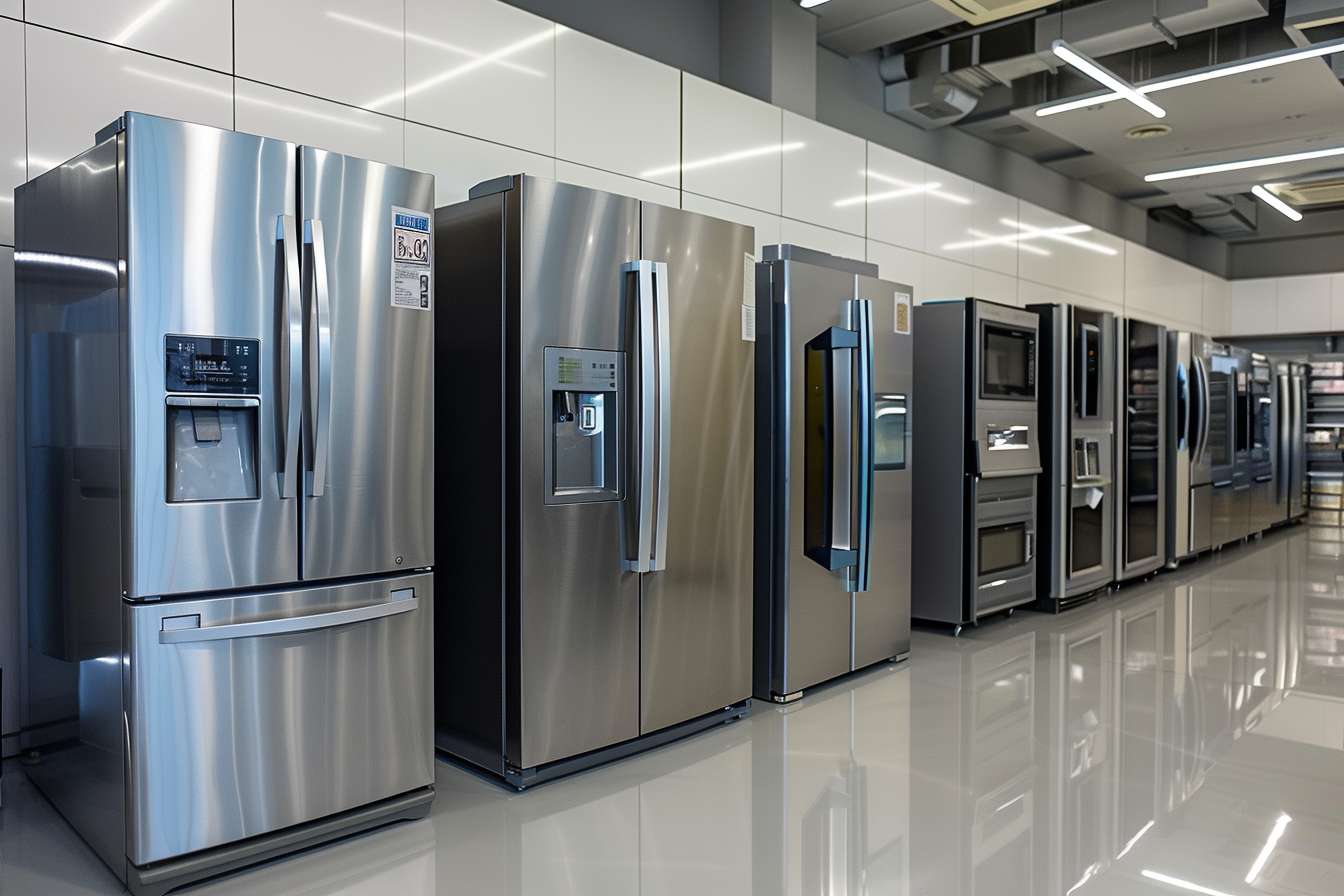How to Choose the Right Used Refrigerators for Your Home
Purchasing a used refrigerator can be an excellent way to save money whilst still getting a quality appliance for your home. With careful consideration and proper inspection, you can find a reliable second-hand refrigerator that meets your needs without breaking the bank. The key lies in knowing what to look for, understanding market prices, and making an informed decision that balances cost, functionality, and longevity.

What Makes a Good Used Refrigerator Purchase?
When shopping for a used refrigerator, several key qualities distinguish worthwhile purchases from potential disappointments. Age is a primary consideration—refrigerators typically last 10-15 years, so units under 5-7 years old generally offer the best value. Energy efficiency matters significantly, as older models can consume substantially more electricity than newer Energy Star certified options. Look for refrigerators manufactured after 2015, which typically use 20% less energy than earlier models.
The refrigerator’s condition is equally important. Check for intact door seals, consistent cooling performance, and proper temperature maintenance. Interior components should be complete and undamaged, including shelves, drawers, and ice makers if applicable. The compressor should run quietly without unusual sounds, as this crucial component is expensive to replace. Finally, consider the refrigerator style that best suits your needs—whether top-freezer, bottom-freezer, side-by-side, or French door—as each configuration offers different advantages for food storage and kitchen layout.
How Can You Determine Fair Used Refrigerator Prices?
Establishing a fair price for a used refrigerator requires research and an understanding of depreciation factors. Generally, used refrigerators sell for 30-50% of their original retail price when they’re 2-5 years old, with greater depreciation for older models. The manufacturer’s reputation significantly influences resale value—premium brands like Sub-Zero, Viking, and Bosch tend to command higher used prices than standard brands.
To determine appropriate pricing, research comparable models on marketplaces like Facebook Marketplace, Craigslist, and eBay, noting prices for similar age, size, and condition units. Features impact value considerably—smart technology, water dispensers, and specialty compartments typically justify higher pricing if functioning properly. Remember that cosmetic condition matters but mechanical condition is paramount. Minor scratches or discoloration on non-visible surfaces shouldn’t significantly reduce the price if the appliance functions perfectly.
Where Should You Shop for Used Refrigerators?
Several reliable sources offer used refrigerators, each with distinct advantages. Appliance specialty stores often provide reconditioned models with limited warranties, offering greater peace of mind though typically at higher prices than private sellers. These establishments frequently test and repair units before resale and may offer delivery services.
Online marketplaces like Facebook Marketplace, OfferUp, and Craigslist generally offer the lowest prices but require buyer diligence in inspection and transportation. Local classified ads can reveal refrigerators from nearby sellers, minimizing transportation challenges. Estate sales and moving sales often yield well-maintained refrigerators at competitive prices as sellers typically need to dispose of items quickly.
Habitat for Humanity ReStores and similar donation-based retailers sometimes offer quality used refrigerators at reasonable prices while supporting charitable causes. When possible, shop locally to reduce transportation complications, as moving refrigerators requires special handling to avoid damaging internal components.
What Should You Inspect Before Buying?
Thorough inspection before purchase is essential when buying a used refrigerator. Begin by plugging in the unit and verifying it reaches and maintains appropriate temperatures—below 4°C (40°F) for the refrigerator compartment and -18°C (0°F) for the freezer. Allow the refrigerator to run for at least 30 minutes to confirm consistent operation.
Carefully examine door seals by closing the door on a piece of paper and checking for resistance when pulling it out—resistance indicates intact seals. Inspect the interior for unusual odors that might indicate mold or bacterial growth that can be difficult to eliminate. Test all functions including ice makers, water dispensers, lights, and temperature controls. Look for signs of repair such as mismatched screws or components, which might indicate previous problems.
Examine the condenser coils at the back or bottom of the unit for excessive dust accumulation or damage. Request maintenance records if available, as regular servicing suggests conscientious ownership. Finally, ask about the history of the refrigerator, including how long the current owner has used it and why they’re selling.
Used Refrigerator Price Comparison Guide
When comparing used refrigerator options, understanding typical price ranges can help you identify fair deals. The table below provides general price estimates based on refrigerator type, age, and condition.
| Refrigerator Type | Age (Years) | Average Condition Price | Excellent Condition Price |
|---|---|---|---|
| Top-Freezer (18-21 cu.ft) | 2-5 | £175-£300 | £325-£425 |
| Bottom-Freezer (18-21 cu.ft) | 2-5 | £250-£400 | £425-£550 |
| Side-by-Side (22-26 cu.ft) | 2-5 | £300-£450 | £475-£675 |
| French Door (25-30 cu.ft) | 2-5 | £400-£700 | £725-£1000 |
| Any Type | 6-10 | Deduct 25-40% | Deduct 25-40% |
Prices, rates, or cost estimates mentioned in this article are based on the latest available information but may change over time. Independent research is advised before making financial decisions.
When evaluating specific models, factor in original retail price, current age, and feature set. Premium brands typically command 15-30% higher prices than standard manufacturers. Units with smart features, built-in water filtration, or dual cooling systems may sell for 10-25% more than basic models of similar age and size when these features function properly.
Making Your Final Decision
After inspecting potential refrigerators and comparing prices, prioritize mechanical soundness over aesthetic perfection or premium features. A basic model in excellent working condition often represents better value than a feature-rich unit with questionable reliability. Consider ongoing operating costs—energy efficiency significantly affects the total cost of ownership over time. Calculate potential delivery expenses, as professional transport for large appliances typically costs £60-£120 depending on distance and service level.
Request a demonstration period of 30-60 minutes before finalizing your purchase to verify the refrigerator maintains proper temperatures and operates as expected. When possible, secure a written receipt that indicates the seller’s contact information and any agreed-upon conditions or warranties. Though used appliances typically come without formal warranties, some sellers may offer limited guarantees of operational condition for 30-90 days, which adds meaningful value to your purchase.




